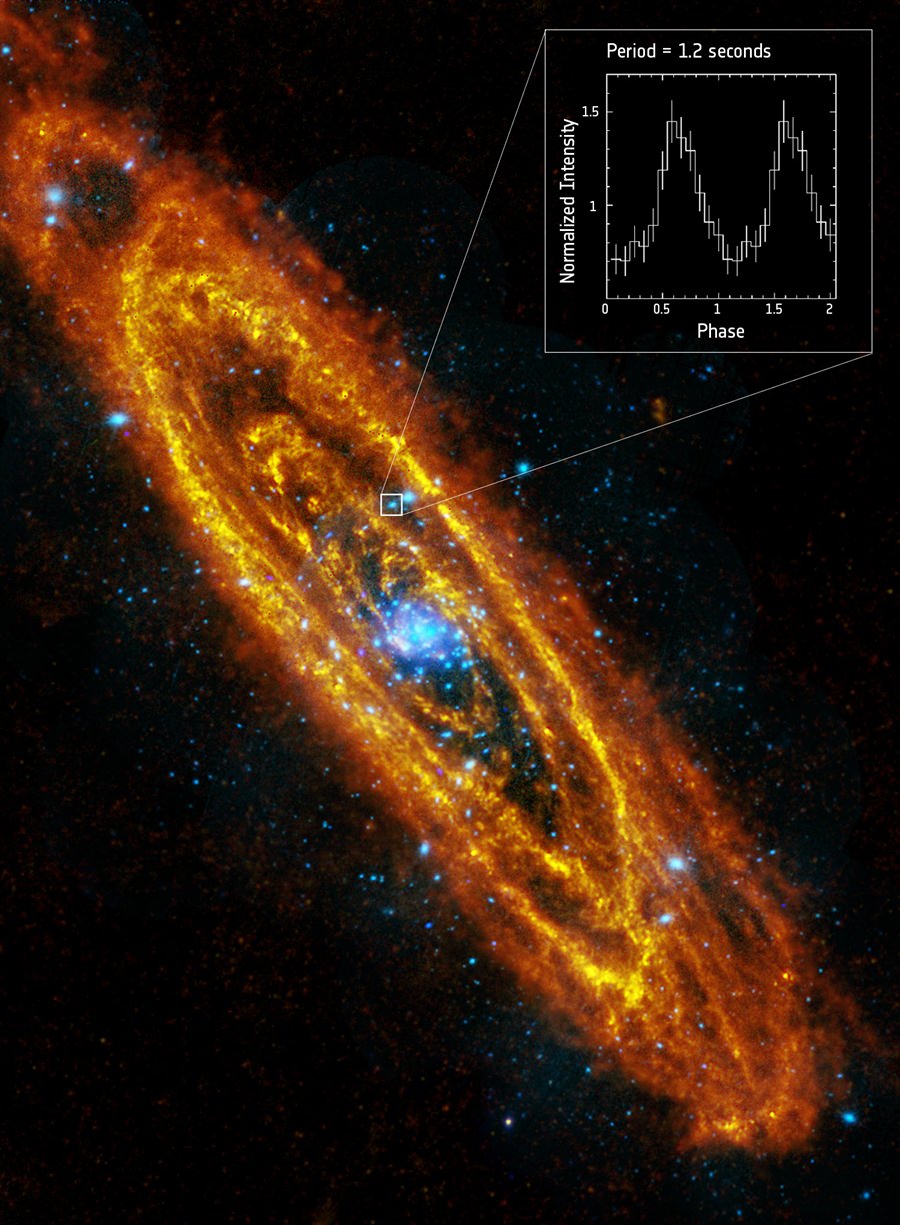On a clear night, away from the bright lights of a city, you can see the smudge of the Andromeda galaxy with the naked eye. With a backyard telescope, you can take a good look at the Milky Way’s sister galaxy. With powerful observatories, it’s possible to see deep inside Andromeda, which is what astronomers have been doing for decades.
Now, astronomers combing through data from the ESA’s XMM Newton space telescope have found something rare, at least for Andromeda; a spinning neutron star. Though these objects are common in the Milky Way, (astronomers think there are over 100 million of them) this is the first one discovered in Andromeda.
A neutron star is the remnant of a massive star that went supernova. They are the smallest and most dense stellar objects known. Neutron stars are made entirely of neutrons, and have no electrical charge. They spin rapidly, and can emit electromagnetic energy.
If the neutron star is oriented toward Earth in just the right way, we can detect their emitted energy as pulses. Think of them as lighthouses, with their beam sweeping across Earth. The pulses of energy were first detected in 1967, and given the name pulsar.” We actually discovered pulsars before we knew that neutron stars existed.
Many neutron stars, including this one, exist in binary systems, which makes them easier to detect. They cannibalize their companion star, drawing gas from the companion into their magnetic fields. As they do so, they emit high energy pulses of X-ray energy.
The star in question, which astronomers, with their characteristic flair for language, have named 3XMM J004301.4+413017, spins rapidly: once every 1.2 seconds. It’s neighbouring star orbits it once every 1.3 days. While these facts are known, a more detailed understanding of the star will have to wait for more analysis. But 3XMM J004301.4+413017 does appear to be an exotic object.
“It could be what we call a ‘peculiar low-mass X-ray binary pulsar’ – in which the companion star is less massive than our Sun – or alternatively an intermediate-mass binary system, with a companion of about two solar masses,” says Paolo Esposito of INAF-Istituto di Astrofisica Spaziale e Fisica Cosmica, Milan, Italy. “We need to acquire more observations of the pulsar and its companion to help determine which scenario is more likely.”
“We’re in a better position now to uncover more objects like this in Andromeda, both with XMM-Newton and with future missions such as ESA’s next-generation high-energy observatory, Athena,” added Norbert Schartel, ESA’s XMM-Newton project scientist.
This discovery is a result of EXTraS, a European Project that combs through XMM Newton data. “EXTraS discovery of an 1.2-s X-ray pulsar in M31” by P. Esposito et al, is published in the Monthly Notices of the Royal Astronomical Society, Volume 457, pp L5-L9, Issue 1 March 21, 2016.

